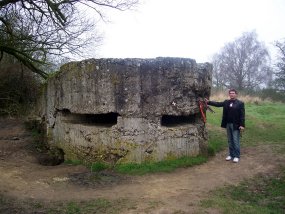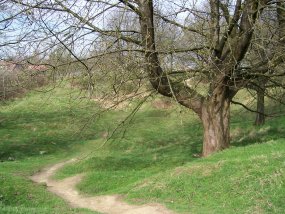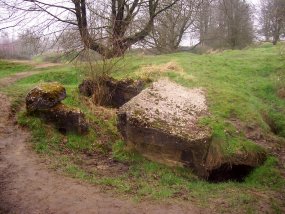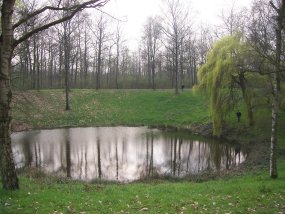
WWII: Maginot Line | Normandy | V-Weapon Sites | Arnhem
Further afield: Crete
| Home Tracing Military Ancestors Travel Advice CWGC Cemeteries Iron Harvest News Book Reviews Glossary Links Contact Me Ypres:
 
|
Core Location 10 – Hill 60
Directions – Leaving Sanctuary Wood Museum drive back to the Menin Road and turn left. After 1km you’ll reach the roundabout at Hellfire Corner. Take the last exit signposted to Zillebeke. After passing through the centre of the village take the left turn at the T-junction and, after another kilometre, take the next right. Pass the restaurant and tea rooms on the right and park in the car park on the left. Practical Information – Surprisingly, with so much of interest here, I’ve never encountered any more than a handful of other visitors at this location. There was a small Hill 60 museum inside the café across the road until recently. This has now gone, replaced by the Hill 60 Restaurant and Tea Rooms. Hill 60 itself with its memorials lies behind the trees on the same side of the road as the car park. Also, if you walk across the railway bridge and (keeping the railway cutting to your left) cross the farmer’s field and take the path that enters the tree-line, after a few minutes you’ll discover the huge "Caterpillar" crater – the result of one of the huge mine explosions that heralded the start of the Messines offensive. The wooded path leading to it passes a German bunker. Historical Notes – Hill 60 undoubtedly witnessed a greater concentration of fighting than any other location in the Salient. Formed from spoil excavated from the adjacent railway cutting, it commanded excellent views of Ypres and was first captured by the Germans from the French during the First Battle in 1914. When the British took over this section of line in early 1915, they resolved to recapture the feature using five mines totalling 9,400lb of explosive. They were detonated at 7pm on 17th April - the resultant craters being occupied by the 1st/Royal West Kent Regiment and a party of sappers. Over the next few days, the Germans launched attack after attack against the defenders – the Royal West Kents being joined by the King’s Own Scottish Borderers, the 9th London Regiment (Queen Victoria’s Rifles) and the East Surrey Regiment. These intensified on 22nd April with the start of the German offensive, which became the 2nd Battle of Ypres. The determination of the British to hold on to the hill produced moments of extreme heroism and bravery and no less than four Victoria Crosses were awarded, to Lt Geoffrey Harold Woolley of the Queen Victoria’s Rifles (the first Territorial Army VC of the war), Private Edward Dwyer and Lt George Rowland Patrick Roupell of the 1st Bn, East Surreys and 2nd Lt Benjamin Handley Geary of the 4th Bn, East Surrey Regiment. The citation for Edward Dwyer reads, "For most conspicuous bravery and devotion to duty at Hill 60, on the 20th of April 1915. When his trench was heavily attacked by German grenade throwers, he climbed onto the parapet, and although subjected to a hail of bombs at close quarters, succeeded in dispersing the enemy by the effective use of his hand grenades. Private Dwyer displayed great gallantry earlier in this day in leaving his trench, under heavy shell fire, to bandage his wounded comrades." Despite this bravery, the hill was recaptured by the Germans and remained in their hands until the Messines offensive of 7th June 1917. For this attack, the British would explode some of the largest mines ever seen on the Western Front. Two were planned for the Hill 60 sector – one on Hill 60 itself and another across the railway line under a feature called the “Caterpillar”. Compared to the 1915 mines, these were monsters with charges of 53,500 and 70,000lbs respectively. The Germans were so shaken that Hill 60 and its environs were taken with little loss. After the war numerous memorials were erected on and around the hill, recalling those who fought there and the hundreds of missing that lie there still. Eyewitness Account – An artillery officer, with his guns at Zillebeke wrote of the two 1917 mine explosions: "Never could I have imagined such a sight. First, there was a double shock that shook the earth here 5,000 yards away like a gigantic earthquake. I was nearly flung off my feet. Then an immense wall of fire that seemed to go half way up to heaven. The whole country was lit with red light like a photographic dark-room. At the same moment all the guns spoke and the battle began on this part of the line. The noise surpasses even the Somme; it is terrific, magnificent, overwhelming. It makes one almost drunk with exhilaration..." Extracts taken from Hill 60 by Nigel Cave, Leo Cooper 1998. |
|||||




